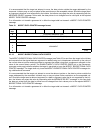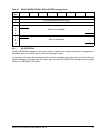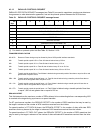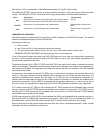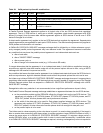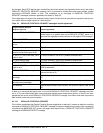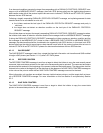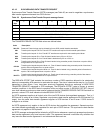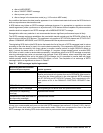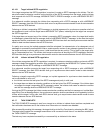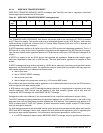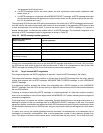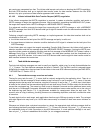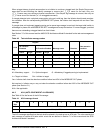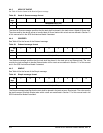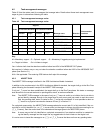
98 Parallel SCSI Interface Product Manual, Rev. A
a. after a HARD RESET;
b. after a TARGET RESET message;
c. after a power cycle; and
d. after a change in the transceiver mode (e.g., LVD mode to MSE mode).
Any condition that leaves the data transfer agreement in an indeterminate state shall cause the SCSI device to
enter an asynchronous data transfer mode.
A SCSI device may initiate an SDTR message exchange whenever it is appropriate to negotiate a new data
transfer agreement (either synchronous or asynchronous). SCSI devices that are capable of synchronous data
transfers shall not respond to an SDTR message with a MESSAGE REJECT message.
Renegotiation after every selection is not recommended since a significant performance impact is likely.
The SDTR message exchange establishes the permissible transfer periods and the REQ/ACK offsets for all
logical units on the two SCSI devices. This agreement only applies to ST DATA IN phases and ST DATA OUT
phases. COMMAND, MESSAGE, and STATUS phases shall use asynchronous transfers.
The originating SCSI device (the SCSI device that sends the first of the pair of SDTR messages) sets its values
according to the rules above to permit it to receive data successfully. If the responding SCSI device is able to
also receive data successfully with these values (or smaller transfer periods or larger REQ/ACK offsets or
both), it returns the same values in its SDTR message. If it requires a larger transfer period, a smaller REQ/
ACK offset, or both in order to receive data successfully, it substitutes values in its SDTR message as required,
returning unchanged any value not required to be changed. Each SCSI device, when transmitting data, shall
respect the negotiated limits set by the other's SDTR message, but it is permitted to transfer data with larger
transfer periods, smaller synchronous REQ/ACK offsets, or both. The completion of an exchange of SDTR
messages implies an agreement as shown in Table
37.
Table 37: SDTR messages implied agreements
If there is an unrecoverable parity error on the initial SDTR message (see sections 3.12.2 and 3.12.3), the initi-
ating SCSI device shall retain its previous data transfer mode. If there is an unexpected bus free on the initial
SDTR message, the initiating SCSI device shall retain its previous data transfer mode.
Responding SCSI device Parallel
Protocol Request response Implied agreement
Non-zero REQ/ACK offset Synchronous transfer (i.e., each SCSI device transmits data with a
transfer period equal to or greater than and a REQ/ACK offset equal to
or less than the values received in the other device’s SDTR message)
with ST DATA IN and ST DATA OUT phases. This is equivalent to pro
-
tocol options of 0h in the PARALLEL PROTOCOL REQUEST mes-
sage.
REQ/ACK offset equal to zero Asynchronous transfer.
MESSAGE REJECT message The originating SCSI device shall set synchronous transfer.
Parity error (on responding
message)
Asynchronous transfer
Unexpected bus free (as a result of
the responding message)
Asynchronous transfer
No response Asynchronous transfer



